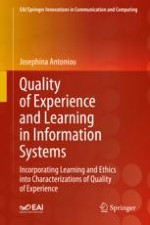The book shows how researchers, practitioners, and designers can improve user experiences with technology by understanding various user learning styles and characteristics when they interact with new and challenging applications and interfaces. Quality of experience in this new technological environment is affected by the learning curve involved in being able to use the new interfaces in a satisfactory way. The author explores the variations in quality of experience when considering learning and ethics when interacting with new, emerging technologies. The author shows how results can be applied to technologies such as big data, AI, 5G, and Internet of Things (IoT). Taken into account are also safety and security requirements, context, environment, etc. The book explores the idea of learning, ethics, and the idea that there exists a “recipe” for a satisfactory interaction with technology if such relevant parameters are taken into consideration.
Analyzes user habits to improve quality of experience when interacting with technology;
Shows how to apply quality of service techniques to 5G, IoT, big data and AI;
Uses behavior models to analyze interactions to improve the user quality of experience.
